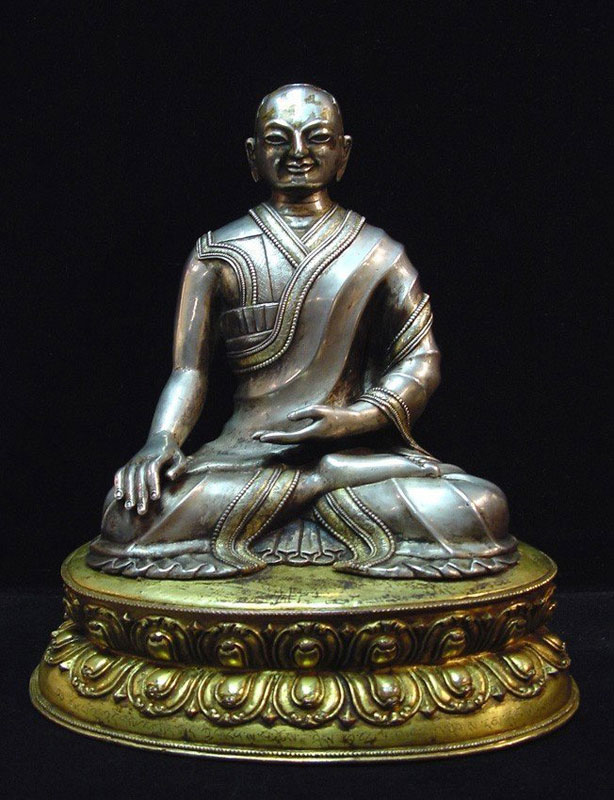previous image || Tracing the Reception Adaptation main article || next image
Tracing the Reception
and Adaptation of Foreign
esthetic elements in Tibetan sculpture
Fig. 13: Portrait
of Lama Sangye Chos pa
Silver
height: 24.cm, width: 23 and depth: 17.5 cm
Sangphu monastery
1476
private collection
The
inscription on this sculpture: "this noble sculpture of the teacher was made as the personal image of the Chief Abbot of Sang pu Monastery (gsang phu gling srad kyi gdan sa pa) the Choje Sherab palden zang po (chos rje shes rab dpal ldan bzang po)." That is what the inscription says, literally.. This sculpture was made for Sherab palden zangpo, the Chief Abbot of the monastery (there were several small monastic residences, he was the head of the whole monastery.) He was still alive in 1476, having ruled already 2 years as chief abbot. In
view of the fact that he had recently assumed the abbot's throne,
he had probabl y performed in 1475 the one-year commemoration ceremony
of the previous abbot, Sangye Chopa, who had ruled for 14 years until
his death. It is a very long reign and he was a great teacher. In
my opinion, it is clear that this sculpture represents the teacher
Sangye Chos pa and was made to be the personal meditation image of
Sherab palden zangpo, to be a reminder of his predecessor and mentor.
|
previous image || Tracing the Reception Adaptation main article || next image
